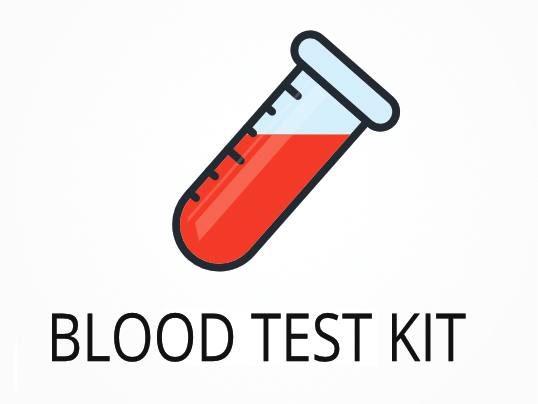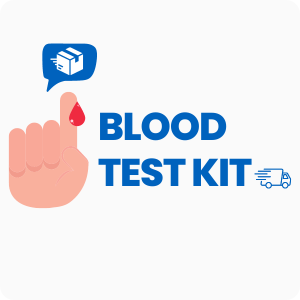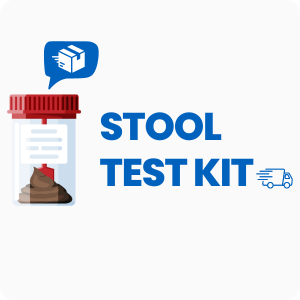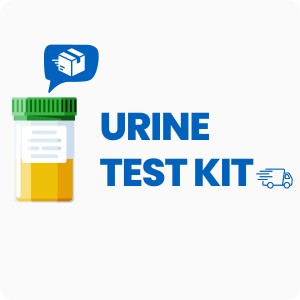Ordering the Food Allergy Test (IgG) | Genova | Canada
Ordering the Food Allergy Test (IgG) from Genova helps identify delayed immune reactions to foods, which can cause symptoms that are often missed by standard allergy tests. Interestingly, delayed food allergies can trigger symptoms hours or even days after eating, making them difficult to connect to specific foods without testing.
When ordering this test, you gain access to specific benefits:
- Pinpoints foods that may be causing hidden inflammation in your body.
- Helps guide dietary changes to reduce symptoms like bloating, headaches, and skin rashes.
- Includes a personal meal planning guide to help you avoid problem foods while maintaining a balanced diet.
- Tests for both immediate and delayed food reactions, offering a broader view than standard allergy panels.
- Supports your healthcare provider in creating a targeted plan for symptom relief.
Who Should Consider Food Sensitivity and Intolerance Testing
People who experience ongoing digestive discomfort, skin issues, or unexplained fatigue after eating may benefit from this test. For example, someone who feels tired and develops a headache several hours after a meal might not realize a delayed food reaction is the cause.
Ordering this test may also be helpful in these situations:
- Frequent bloating, cramps, or changes in bowel habits after eating common foods.
- Recurring skin problems like eczema or hives that do not respond to typical treatments.
- Persistent sinus congestion or headaches that seem linked to certain meals.
- Joint pain or inflammation that worsens after eating specific foods.
- Unexpected mood changes or trouble focusing that appear after meals, which can sometimes be linked to food sensitivities.
Testing for delayed food reactions can help you and your healthcare provider identify specific foods that may be causing symptoms, allowing for targeted changes that can reduce discomfort and improve measurable outcomes like symptom frequency and severity. Delaying this test may mean continued exposure to foods that trigger symptoms, which can make it harder to pinpoint the cause and slow down symptom improvement.
How to Prepare for Food Allergy and Sensitivity Testing
Fasting is not required for this test, so you can eat and drink as usual before your sample is collected. Always follow any instructions or preparation steps given by your doctor or healthcare provider to make sure your results are as helpful as possible.
Labs Included When Ordering Your Food Allergy Test (IgG) | Genova
| Test Name | Reference Range | What This Test Measures | Low and High Levels of Food Allergy Test (IgG) |
|---|---|---|---|
| Dairy, Eggs, and Animal Proteins | |||
| Casein | < 2.0 U/mL | Casein is a protein found in milk. This test checks for immune reactions to casein, which can cause digestive and skin symptoms. | High levels mean your immune system may react to casein, possibly causing symptoms like bloating or rash.
Low levels mean your body is less likely to react to casein. |
| Cheddar Cheese | < 2.0 U/mL | Cheddar cheese contains milk proteins that can trigger immune responses in sensitive people. This test looks for delayed reactions. | High levels mean you may have a delayed immune response to cheddar cheese.
Low levels mean cheddar cheese is less likely to cause symptoms. |
| Cottage Cheese | < 2.0 U/mL | Cottage cheese is another dairy product tested for delayed immune reactions, which can cause digestive upset or skin issues. | High levels mean your body may react to cottage cheese.
Low levels mean cottage cheese is less likely to be a problem food. |
| Cow’s Milk | < 2.0 U/mL | This test checks for immune responses to cow’s milk, which can cause symptoms like cramps, diarrhea, or eczema. | High levels mean cow’s milk may be causing delayed symptoms.
Low levels mean cow’s milk is less likely to trigger a reaction. |
| Egg White | < 2.0 U/mL | Egg white is a common food allergen. This test measures delayed immune responses that may not show up right after eating. | High levels mean you may react to egg whites with symptoms like headache or stomach pain.
Low levels mean egg whites are less likely to cause issues. |
| Egg Yolk | < 2.0 U/mL | Egg yolk can also cause delayed immune reactions. This test helps identify if egg yolk is a trigger for your symptoms. | High levels mean egg yolk may be linked to your symptoms.
Low levels mean egg yolk is less likely to be a problem. |
| Goat’s Milk | < 2.0 U/mL | Goat’s milk is tested for delayed immune responses, which can cause digestive or skin symptoms in sensitive people. | High levels mean goat’s milk may be causing delayed symptoms.
Low levels mean goat’s milk is less likely to cause a reaction. |
| Lactalbumin | < 2.0 U/mL | Lactalbumin is a milk protein. This test checks for immune reactions that can cause symptoms like bloating or rash. | High levels mean your immune system may react to lactalbumin.
Low levels mean lactalbumin is less likely to be a trigger. |
| Yogurt | < 2.0 U/mL | Yogurt contains milk proteins that can cause delayed immune reactions. This test helps identify if yogurt is a problem food. | High levels mean yogurt may be linked to your symptoms.
Low levels mean yogurt is less likely to cause issues. |
| Chicken | < 2.0 U/mL | Chicken is tested for delayed immune responses, which can cause symptoms like joint pain or digestive upset. | High levels mean chicken may be causing delayed symptoms.
Low levels mean chicken is less likely to be a trigger. |
| Lamb | < 2.0 U/mL | Lamb is included to check for delayed immune reactions that may cause digestive or skin symptoms. | High levels mean lamb may be linked to your symptoms.
Low levels mean lamb is less likely to cause a reaction. |
| Pork | < 2.0 U/mL | Pork is tested for delayed immune responses, which can cause symptoms like bloating or joint pain. | High levels mean pork may be causing delayed symptoms.
Low levels mean pork is less likely to be a problem food. |
| Turkey | < 2.0 U/mL | Turkey is included to check for delayed immune reactions that may cause digestive or skin symptoms. | High levels mean turkey may be linked to your symptoms.
Low levels mean turkey is less likely to cause a reaction. |
| Beef | < 2.0 U/mL | Beef is tested for delayed immune responses, which can cause symptoms like bloating or joint pain. | High levels mean beef may be causing delayed symptoms.
Low levels mean beef is less likely to be a problem food. |
| Egg White | < 2.0 U/mL | Egg white is a common food allergen. This test measures delayed immune responses that may not show up right after eating. | High levels mean you may react to egg whites with symptoms like headache or stomach pain.
Low levels mean egg whites are less likely to cause issues. |
| Egg Yolk | < 2.0 U/mL | Egg yolk can also cause delayed immune reactions. This test helps identify if egg yolk is a trigger for your symptoms. | High levels mean egg yolk may be linked to your symptoms.
Low levels mean egg yolk is less likely to be a problem. |
| Fish and Shellfish | |||
| Clam | < 2.0 U/mL | Clam is tested for delayed immune responses, which can cause digestive or skin symptoms. | High levels mean clam may be causing delayed symptoms.
Low levels mean clam is less likely to be a problem food. |
| Cod | < 2.0 U/mL | Cod is included to check for delayed immune reactions that may cause digestive or skin symptoms. | High levels mean cod may be linked to your symptoms.
Low levels mean cod is less likely to cause a reaction. |
| Crab | < 2.0 U/mL | Crab is tested for delayed immune responses, which can cause symptoms like bloating or rash. | High levels mean crab may be causing delayed symptoms.
Low levels mean crab is less likely to be a problem food. |
| Lobster | < 2.0 U/mL | Lobster is included to check for delayed immune reactions that may cause digestive or skin symptoms. | High levels mean lobster may be linked to your symptoms.
Low levels mean lobster is less likely to cause a reaction. |
| Oyster | < 2.0 U/mL | Oyster is tested for delayed immune responses, which can cause symptoms like bloating or rash. | High levels mean oyster may be causing delayed symptoms.
Low levels mean oyster is less likely to be a problem food. |
| Red Snapper | < 2.0 U/mL | Red snapper is included to check for delayed immune reactions that may cause digestive or skin symptoms. | High levels mean red snapper may be linked to your symptoms.
Low levels mean red snapper is less likely to cause a reaction. |
| Salmon | < 2.0 U/mL | Salmon is tested for delayed immune responses, which can cause symptoms like bloating or rash. | High levels mean salmon may be causing delayed symptoms.
Low levels mean salmon is less likely to be a problem food. |
| Sardine | < 2.0 U/mL | Sardine is included to check for delayed immune reactions that may cause digestive or skin symptoms. | High levels mean sardine may be linked to your symptoms.
Low levels mean sardine is less likely to cause a reaction. |
| Shrimp | < 2.0 U/mL | Shrimp is tested for delayed immune responses, which can cause symptoms like bloating or rash. | High levels mean shrimp may be causing delayed symptoms.
Low levels mean shrimp is less likely to be a problem food. |
| Sole | < 2.0 U/mL | Sole is included to check for delayed immune reactions that may cause digestive or skin symptoms. | High levels mean sole may be linked to your symptoms.
Low levels mean sole is less likely to cause a reaction. |
| Trout | < 2.0 U/mL | Trout is tested for delayed immune responses, which can cause symptoms like bloating or rash. | High levels mean trout may be causing delayed symptoms.
Low levels mean trout is less likely to be a problem food. |
| Tuna | < 2.0 U/mL | Tuna is included to check for delayed immune reactions that may cause digestive or skin symptoms. | High levels mean tuna may be linked to your symptoms.
Low levels mean tuna is less likely to cause a reaction. |
| Grains, Legumes, and Seeds | |||
| Buckwheat | < 2.0 U/mL | Buckwheat is tested for delayed immune responses, which can cause digestive or skin symptoms. | High levels mean buckwheat may be causing delayed symptoms.
Low levels mean buckwheat is less likely to be a problem food. |
| Corn | < 2.0 U/mL | Corn is included to check for delayed immune reactions that may cause digestive or skin symptoms. | High levels mean corn may be linked to your symptoms.
Low levels mean corn is less likely to cause a reaction. |
| Corn Gluten | < 2.0 U/mL | Corn gluten is tested for delayed immune responses, which can cause symptoms like bloating or rash. | High levels mean corn gluten may be causing delayed symptoms.
Low levels mean corn gluten is less likely to be a problem food. |
| Oat | < 2.0 U/mL | Oat is included to check for delayed immune reactions that may cause digestive or skin symptoms. | High levels mean oat may be linked to your symptoms.
Low levels mean oat is less likely to cause a reaction. |
| Peanut | < 2.0 U/mL | Peanut is tested for delayed immune responses, which can cause symptoms like bloating or rash. | High levels mean peanut may be causing delayed symptoms.
Low levels mean peanut is less likely to be a problem food. |
| Pecan | < 2.0 U/mL | Pecan is included to check for delayed immune reactions that may cause digestive or skin symptoms. | High levels mean pecan may be linked to your symptoms.
Low levels mean pecan is less likely to cause a reaction. |
| Pinto Bean | < 2.0 U/mL | Pinto bean is tested for delayed immune responses, which can cause symptoms like bloating or rash. | High levels mean pinto bean may be causing delayed symptoms.
Low levels mean pinto bean is less likely to be a problem food. |
| Rice | < 2.0 U/mL | Rice is included to check for delayed immune reactions that may cause digestive or skin symptoms. | High levels mean rice may be linked to your symptoms.
Low levels mean rice is less likely to cause a reaction. |
| Rye | < 2.0 U/mL | Rye is tested for delayed immune responses, which can cause symptoms like bloating or rash. | High levels mean rye may be causing delayed symptoms.
Low levels mean rye is less likely to be a problem food. |
| Sesame | < 2.0 U/mL | Sesame is included to check for delayed immune reactions that may cause digestive or skin symptoms. | High levels mean sesame may be linked to your symptoms.
Low levels mean sesame is less likely to cause a reaction. |
| Soy | < 2.0 U/mL | Soy is tested for delayed immune responses, which can cause symptoms like bloating or rash. | High levels mean soy may be causing delayed symptoms.
Low levels mean soy is less likely to be a problem food. |
| Sunflower Seed | < 2.0 U/mL | Sunflower seed is included to check for delayed immune reactions that may cause digestive or skin symptoms. | High levels mean sunflower seed may be linked to your symptoms.
Low levels mean sunflower seed is less likely to cause a reaction. |
| Walnut | < 2.0 U/mL | Walnut is tested for delayed immune responses, which can cause symptoms like bloating or rash. | High levels mean walnut may be causing delayed symptoms.
Low levels mean walnut is less likely to be a problem food. |
| Wheat | < 2.0 U/mL | Wheat is included to check for delayed immune reactions that may cause digestive or skin symptoms. | High levels mean wheat may be linked to your symptoms.
Low levels mean wheat is less likely to cause a reaction. |
| Yeast (Food) | < 2.0 U/mL | Yeast is tested for delayed immune responses, which can cause symptoms like bloating or rash. | High levels mean yeast may be causing delayed symptoms.
Low levels mean yeast is less likely to be a problem food. |
| Fruits and Vegetables | |||
| Alfalfa | < 2.0 U/mL | Alfalfa is tested for delayed immune responses, which can cause digestive or skin symptoms. | High levels mean alfalfa may be causing delayed symptoms.
Low levels mean alfalfa is less likely to be a problem food. |
| Almond | < 2.0 U/mL | Almond is included to check for delayed immune reactions that may cause digestive or skin symptoms. | High levels mean almond may be linked to your symptoms.
Low levels mean almond is less likely to cause a reaction. |
| Apple | < 2.0 U/mL | Apple is tested for delayed immune responses, which can cause symptoms like bloating or rash. | High levels mean apple may be causing delayed symptoms.
Low levels mean apple is less likely to be a problem food. |
| Apricot | < 2.0 U/mL | Apricot is included to check for delayed immune reactions that may cause digestive or skin symptoms. | High levels mean apricot may be linked to your symptoms.
Low levels mean apricot is less likely to cause a reaction. |
| Asparagus | < 2.0 U/mL | Asparagus is tested for delayed immune responses, which can cause symptoms like bloating or rash. | High levels mean asparagus may be causing delayed symptoms.
Low levels mean asparagus is less likely to be a problem food. |
| Avocado | < 2.0 U/mL | Avocado is included to check for delayed immune reactions that may cause digestive or skin symptoms. | High levels mean avocado may be linked to your symptoms.
Low levels mean avocado is less likely to cause a reaction. |
| Banana | < 2.0 U/mL | Banana is tested for delayed immune responses, which can cause symptoms like bloating or rash. | High levels mean banana may be causing delayed symptoms.
Low levels mean banana is less likely to be a problem food. |
| Blueberry | < 2.0 U/mL | Blueberry is included to check for delayed immune reactions that may cause digestive or skin symptoms. | High levels mean blueberry may be linked to your symptoms.
Low levels mean blueberry is less likely to cause a reaction. |
| Broccoli | < 2.0 U/mL | Broccoli is tested for delayed immune responses, which can cause symptoms like bloating or rash. | High levels mean broccoli may be causing delayed symptoms.
Low levels mean broccoli is less likely to be a problem food. |
| Cabbage | < 2.0 U/mL | Cabbage is included to check for delayed immune reactions that may cause digestive or skin symptoms. | High levels mean cabbage may be linked to your symptoms.
Low levels mean cabbage is less likely to cause a reaction. |
| Carrot | < 2.0 U/mL | Carrot is tested for delayed immune responses, which can cause symptoms like bloating or rash. | High levels mean carrot may be causing delayed symptoms.
Low levels mean carrot is less likely to be a problem food. |
| Celery | < 2.0 U/mL | Celery is included to check for delayed immune reactions that may cause digestive or skin symptoms. | High levels mean celery may be linked to your symptoms.
Low levels mean celery is less likely to cause a reaction. |
| Cucumber | < 2.0 U/mL | Cucumber is tested for delayed immune responses, which can cause symptoms like bloating or rash. | High levels mean cucumber may be causing delayed symptoms.
Low levels mean cucumber is less likely to be a problem food. |
| Garlic | < 2.0 U/mL | Garlic is included to check for delayed immune reactions that may cause digestive or skin symptoms. | High levels mean garlic may be linked to your symptoms.
Low levels mean garlic is less likely to cause a reaction. |
| Grape | < 2.0 U/mL | Grape is tested for delayed immune responses, which can cause symptoms like bloating or rash. | High levels mean grape may be causing delayed symptoms.
Low levels mean grape is less likely to be a problem food. |
| Grapefruit | < 2.0 U/mL | Grapefruit is included to check for delayed immune reactions that may cause digestive or skin symptoms. | High levels mean grapefruit may be linked to your symptoms.
Low levels mean grapefruit is less likely to cause a reaction. |
| Green (string) Bean | < 2.0 U/mL | Green bean is tested for delayed immune responses, which can cause symptoms like bloating or rash. | High levels mean green bean may be causing delayed symptoms.
Low levels mean green bean is less likely to be a problem food. |
| Green Pepper | < 2.0 U/mL | Green pepper is included to check for delayed immune reactions that may cause digestive or skin symptoms. | High levels mean green pepper may be linked to your symptoms.
Low levels mean green pepper is less likely to cause a reaction. |
| Lemon | < 2.0 U/mL | Lemon is tested for delayed immune responses, which can cause symptoms like bloating or rash. | High levels mean lemon may be causing delayed symptoms.
Low levels mean lemon is less likely to be a problem food. |
| Lentil | < 2.0 U/mL | Lentil is included to check for delayed immune reactions that may cause digestive or skin symptoms. | High levels mean lentil may be linked to your symptoms.
Low levels mean lentil is less likely to cause a reaction. |
| Lettuce | < 2.0 U/mL | Lettuce is tested for delayed immune responses, which can cause symptoms like bloating or rash. | High levels mean lettuce may be causing delayed symptoms.
Low levels mean lettuce is less likely to be a problem food. |
| Lima Bean | < 2.0 U/mL | Lima bean is included to check for delayed immune reactions that may cause digestive or skin symptoms. | High levels mean lima bean may be linked to your symptoms.
Low levels mean lima bean is less likely to cause a reaction. |
| Mushroom | < 2.0 U/mL | Mushroom is tested for delayed immune responses, which can cause symptoms like bloating or rash. | High levels mean mushroom may be causing delayed symptoms.
Low levels mean mushroom is less likely to be a problem food. |
| Olive | < 2.0 U/mL | Olive is included to check for delayed immune reactions that may cause digestive or skin symptoms. | High levels mean olive may be linked to your symptoms.
Low levels mean olive is less likely to cause a reaction. |
| Onion | < 2.0 U/mL | Onion is tested for delayed immune responses, which can cause symptoms like bloating or rash. | High levels mean onion may be causing delayed symptoms.
Low levels mean onion is less likely to be a problem food. |
| Orange | < 2.0 U/mL | Orange is included to check for delayed immune reactions that may cause digestive or skin symptoms. | High levels mean orange may be linked to your symptoms.
Low levels mean orange is less likely to cause a reaction. |
| Papaya | < 2.0 U/mL | Papaya is tested for delayed immune responses, which can cause symptoms like bloating or rash. | High levels mean papaya may be causing delayed symptoms.
Low levels mean papaya is less likely to be a problem food. |
| Pea | < 2.0 U/mL | Pea is included to check for delayed immune reactions that may cause digestive or skin symptoms. | High levels mean pea may be linked to your symptoms.
Low levels mean pea is less likely to cause a reaction. |
| Peach | < 2.0 U/mL | Peach is tested for delayed immune responses, which can cause symptoms like bloating or rash. | High levels mean peach may be causing delayed symptoms.
Low levels mean peach is less likely to be a problem food. |
| Pear | < 2.0 U/mL | Pear is included to check for delayed immune reactions that may cause digestive or skin symptoms. | High levels mean pear may be linked to your symptoms.
Low levels mean pear is less likely to cause a reaction. |
| Pineapple | < 2.0 U/mL | Pineapple is tested for delayed immune responses, which can cause symptoms like bloating or rash. | High levels mean pineapple may be causing delayed symptoms.
Low levels mean pineapple is less likely to be a problem food. |
| Plum | < 2.0 U/mL | Plum is included to check for delayed immune reactions that may cause digestive or skin symptoms. | High levels mean plum may be linked to your symptoms.
Low levels mean plum is less likely to cause a reaction. |
| Potato, Sweet | < 2.0 U/mL | Sweet potato is tested for delayed immune responses, which can cause symptoms like bloating or rash. | High levels mean sweet potato may be causing delayed symptoms.
Low levels mean sweet potato is less likely to be a problem food. |
| Potato, White | < 2.0 U/mL | White potato is included to check for delayed immune reactions that may cause digestive or skin symptoms. | High levels mean white potato may be linked to your symptoms.
Low levels mean white potato is less likely to cause a reaction. |
| Raspberry | < 2.0 U/mL | Raspberry is tested for delayed immune responses, which can cause symptoms like bloating or rash. | High levels mean raspberry may be causing delayed symptoms.
Low levels mean raspberry is less likely to be a problem food. |
| Spinach | < 2.0 U/mL | Spinach is included to check for delayed immune reactions that may cause digestive or skin symptoms. | High levels mean spinach may be linked to your symptoms.
Low levels mean spinach is less likely to cause a reaction. |
| Strawberry | < 2.0 U/mL | Strawberry is tested for delayed immune responses, which can cause symptoms like bloating or rash. | High levels mean strawberry may be causing delayed symptoms.
Low levels mean strawberry is less likely to be a problem food. |
| Tomato | < 2.0 U/mL | Tomato is included to check for delayed immune reactions that may cause digestive or skin symptoms. | High levels mean tomato may be linked to your symptoms.
Low levels mean tomato is less likely to cause a reaction. |
| Zucchini | < 2.0 U/mL | Zucchini is tested for delayed immune responses, which can cause symptoms like bloating or rash. | High levels mean zucchini may be causing delayed symptoms.
Low levels mean zucchini is less likely to be a problem food. |
| Other Foods and Markers | |||
| Cane Sugar | < 2.0 U/mL | Cane sugar is tested for delayed immune responses, which can cause symptoms like bloating or rash. | High levels mean cane sugar may be causing delayed symptoms.
Low levels mean cane sugar is less likely to be a problem food. |
| Chocolate | < 2.0 U/mL | Chocolate is included to check for delayed immune reactions that may cause digestive or skin symptoms. | High levels mean chocolate may be linked to your symptoms.
Low levels mean chocolate is less likely to cause a reaction. |
| Coffee | < 2.0 U/mL | Coffee is tested for delayed immune responses, which can cause symptoms like bloating or rash. | High levels mean coffee may be causing delayed symptoms.
Low levels mean coffee is less likely to be a problem food. |
| Honey | < 2.0 U/mL | Honey is included to check for delayed immune reactions that may cause digestive or skin symptoms. | High levels mean honey may be linked to your symptoms.
Low levels mean honey is less likely to cause a reaction. |
| Total IgE | 0.00 – 100.00 IU/mL | Total IgE measures the overall level of allergy-related antibodies in your blood. High levels can indicate a general allergic tendency. | High levels mean your body may be reacting to one or more allergens.
Low levels mean you are less likely to have an allergic response. |
Reference ranges may change slightly as labs update their methods or as new research becomes available.
Food Allergy Test FAQ
Is there Food Allergy Test testing near me?
This is a test kit that you can collect locally, and you can check the draw location link at the top of the page for nearby options. For people dealing with ongoing digestive or skin symptoms, having a convenient collection site makes it easier to get tested quickly and start finding answers.
How do I interpret the test results?
While your treating physician should review your results, you can also use our one-on-one test results review service with our clinical team for a detailed explanation.
What is the cost of the test?
The price you see for the test includes standard shipping to you and back to the lab, but draw fees may apply. Ordering this test can help you identify food triggers sooner, which may help you feel better faster.
How often should I retest?
It is recommended to retest every 6 to 12 months, especially if you have made changes to your diet or if symptoms return. Regular testing helps track changes in your immune response to foods and supports ongoing symptom management.
How accurate is the test?
This test uses enzyme-linked immunosorbent assay (ELISA) to measure IgG antibodies to specific foods, with a specificity of 95% and sensitivity of 90%. TrueHealthLabs.com partners with CLIA-certified and CAP-certified laboratories to uphold rigorous testing standards for dependable results.
Important Notes
- Immunosuppressants such as Prednisone and steroids will alter test results. Talk to your doctor before testing.
- This kit cannot be mailed or collected in New York State. Contact us with questions.
Medical Review Board
Reviewed by Jeff Donohue M.D. from Body Logic and Brady Hurst DC, CCCN. Written by True Health Lab’s team of editorial health contributors.
Disclaimer: This information is for educational purposes only and not intended as medical advice. Consult your healthcare provider for personalized guidance.
Why Customers Trust True Health Labs - What People are saying
Also rated 4.6 out of 5 based on 3452 ShopperApproved reviews- See all TrueHealthLabs.com reviews.










